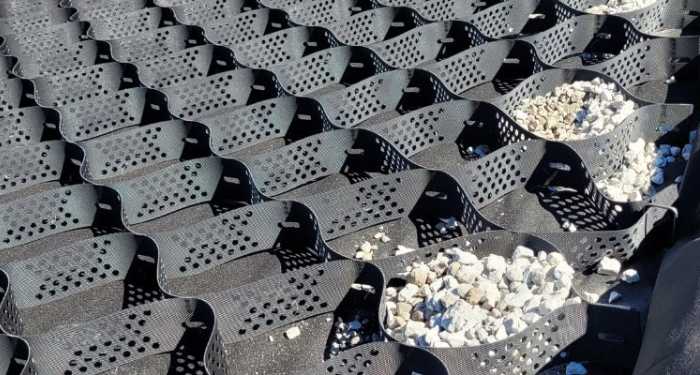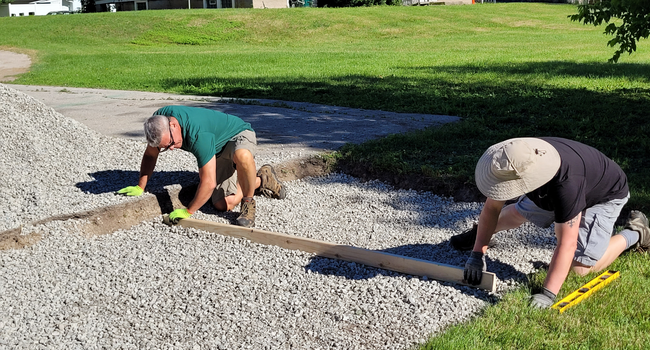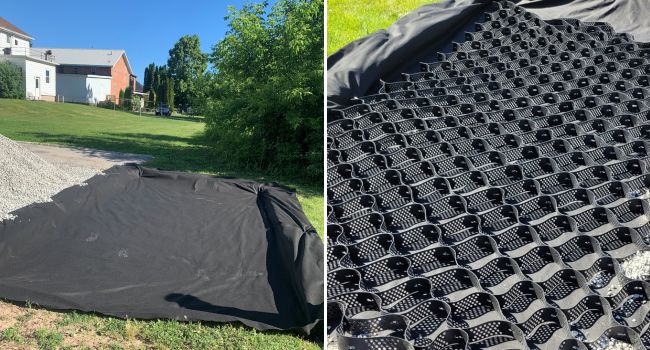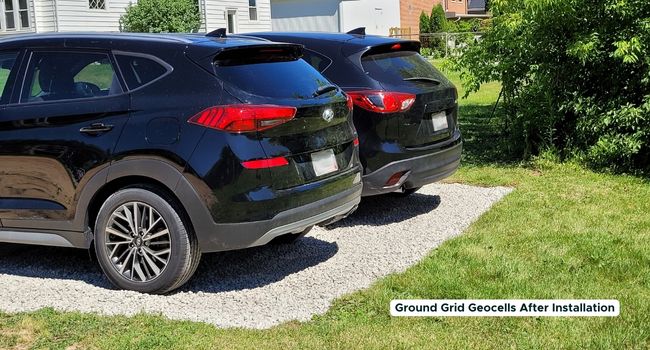DIY Guide to Building a Stable Gravel Parking Area with Ground Grid Geocells
Posted November 17, 2022
If you have a multiple-car household, or need to store recreational vehicles outdoors, you may be contemplating where to park everything. Instead of parking on the lawn—which is destructive to your grass, and in many places prohibited—or paying for a storage unit, adding a parking pad is a practical and affordable way to create more space suitable for supporting the weight of your vehicles.
Homeowners have several options when choosing a paving surface for driveway extensions and parking pads. Concrete is the most commonly used material, but it can be cost-prohibitive and availability of qualified contractors may be limited.
A permeable pavement is a more affordable and environmentally friendly alternative to traditional hard-surface pavements. They cost less per square foot than hard-paved options and are virtually maintenance-free.
Geocells Offer Affordable and Permeable Paver Option for Homeowners
In addition to rigid permeable pavers, flexible geocell systems are an excellent option for creating low-maintenance, sustainable driveways and parking pads. Also referred to as cellular confinement systems, geocells are three-dimensional, expandable panels that confine infill materials to create a stable surface capable of supporting heavy vehicle loads.
The Yardfully Ground Grid Geocell kit provides homeowners with the materials and accessories needed to install a permanent parking pad at home. The kit includes one (1) geocell section (expandable to 9’ x 17’), 20 stakes, and a geotextile underlayment. The geocellular system is easy to install and can be infilled with gravel, sand, or a blend of gravel and topsoil to support grass cover, depending on preferences and intended use.
Made in the USA from quality high-density polyethylene (HDPE), the Ground Grid geocells are lightweight and flexible, yet strong enough to support vehicles up to 30,000 pounds (4-inch depth option).
Ground Grid Geocell System Stabilizes Residential Parking Pad
The gravel parking area reserved for residents of a single-family rental property was experiencing rutting and large potholes caused by frequent traffic and poor drainage. To create a more aesthetically pleasing and vehicle-friendly parking area for the residents, the property owner began exploring options for a long-term ground stabilization solution.
Concerns about water runoff and cracking from Wisconsin’s notorious freezing winter temperatures ruled out a traditional hard-paved surface. Instead, they wanted a maintenance-free, permeable gravel solution.
Since the property owner was familiar with the Yardfully line of products, they reached out to get a recommendation for the parking area. After some discussion, we recommended the Ground Grid Geocell kit. The parking area needed to support passenger vehicles, so they opted for the 3-inch geocells, which supports up to 10,000 pounds.
How to Install the Ground Grid Geocells
To prepare the area, installers first excavated an area adjacent to the existing concrete driveway. They removed the grass and approximately six inches of soil to allow installation of the 3-inch geocells and leave room for a leveling course and slight overfill of the geocells.
Once excavated, the area was leveled using two inches of crushed gravel. Installers then used a 2×4 to screed the area to ensure a flat, level surface.

After preparing the subgrade, they placed a non-woven geotextile over the ground and pinned it down at the corners. Then they extended the Ground Grid panel over the geotextile to cover the excavated area. The remaining stakes were used to secure the corners and edges of the Ground Grid panel and to hold the cells open for filling.

** TIP: If you need a larger parking area, you can connect two or more Ground Grid sections using our Yardfully Closure Keys.
The final step involved placing the gravel into the Ground Grid geocell panels. A team of two installers used a wheelbarrow and shovels to fill the cells with gravel, beginning around the perimeter and then moving toward the center. You can drive a vehicle on the Ground Grid system immediately after infilling the geocells. The residents now have a stable parking pad that will withstand rain, snow, ice, and daily traffic without dealing with rutting or potholes.

Benefits of the Ground Grid Geocells for Homeowners
- Versatile: Can be used for a variety of residential applications, including driveways, parking areas, trails, paths, and patios.
- Strong: Support heavy loads up to 30,000 pounds.
- Easy Installation: No heavy equipment or specialized crews are required to install. Simply expand the Ground Grid section and anchor (stakes included) it to the ground. Then fill the cells with soil, grass/sod, sand, or gravel.
- Lightweight & Durable: Formulated for in-ground use and will not corrode or break down over time – even when exposed to the harshest weather conditions.

